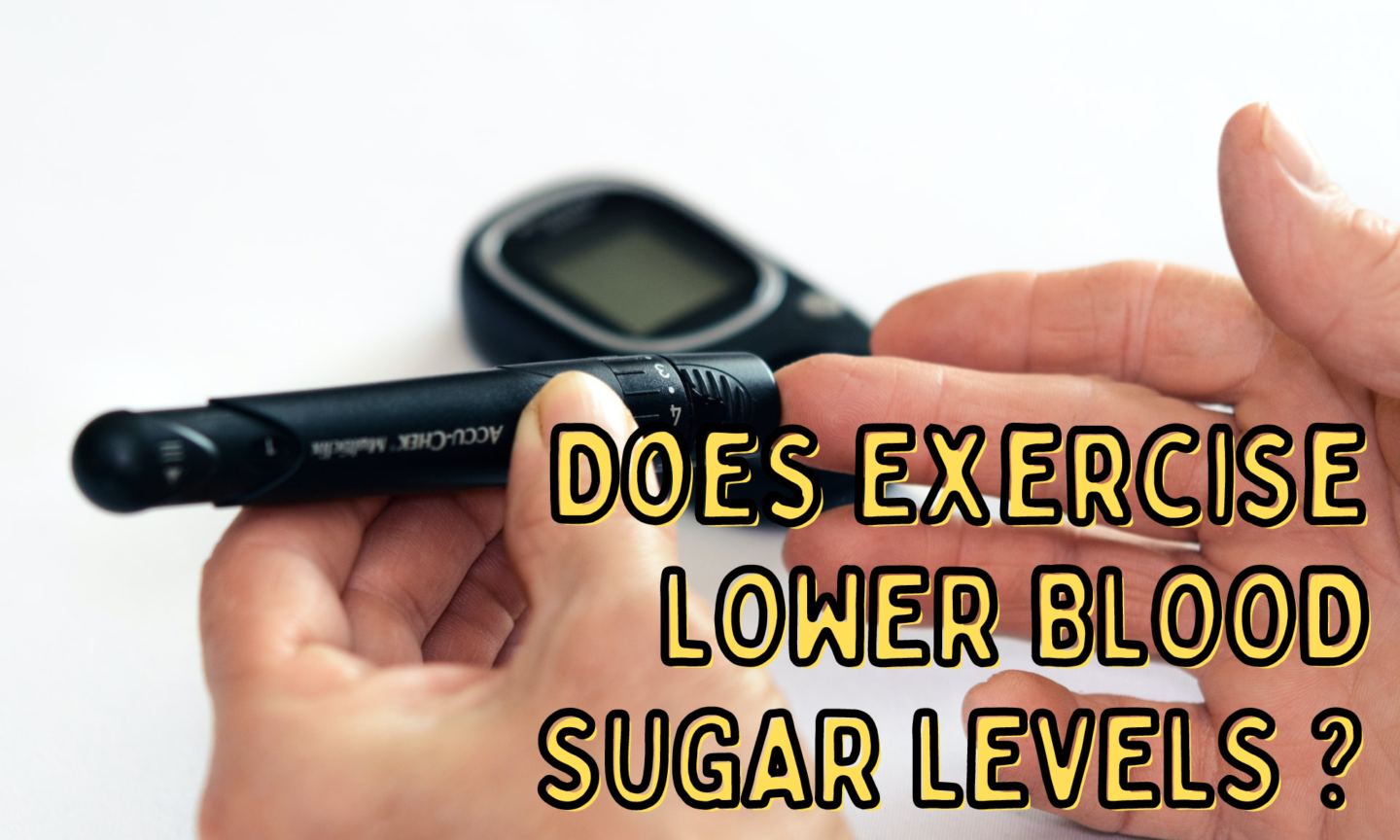Does Exercise Lower Blood Sugar?
17th Mar 2023
Chris Nicklin is a certified Personal Trainer with over 7 years' experience, and the owner of Nxtep Personal Training. Chris qualified from Edge Hill University with a Bachelor of Science (BSc) degree in Sports Coaching and Performance Development, and has delivered over ten thousand one-to-one Personal Training sessions.

Blood sugar control is a critical aspect of managing diabetes, and physical activity is one of the most effective tools for achieving it. Regular exercise has been shown to improve insulin sensitivity, lower blood sugar levels, and reduce the risk of diabetes-related complications. In this article, I will explore the relationship between exercise and blood sugar control and provide my recommendations for incorporating physical activity into a diabetes management plan, based on our experience of designing personal training programs for people with diabetes.
What Is Blood Sugar Control?
Before delving into the role of exercise in blood sugar control, it’s essential to understand how the body regulates blood sugar levels. Blood sugar, also known as glucose, is the primary source of energy for the body’s cells. However, too much glucose in the bloodstream can damage vital organs, leading to various health complications. This is where Insulin comes in. Insulin is a hormone produced by the pancreas, and it plays a crucial role in regulating blood sugar levels by enabling cells to absorb glucose from the bloodstream.
However, in people with type 2 diabetes, the body becomes less sensitive to insulin, leading to higher blood sugar levels. This is known as insulin resistance and it’s a hallmark of type 2 diabetes. Over time, this insulin resistance can lead to further complications, such as cardiovascular disease, kidney damage, and nerve damage. So, effective blood sugar management is critical for preventing diabetes-related complications and maintaining overall health.
The Role of Exercise in Blood Sugar Control
Regular exercise has been shown to improve insulin sensitivity, which then leads to better blood sugar control, as it helps muscles use glucose more efficiently even without insulin. This then reduces the need for insulin to lower blood sugar levels. Additionally, exercise can help reduce body fat, which is associated with insulin resistance and higher blood sugar levels.
Several studies have shown the benefits of exercise for blood sugar control. For example, a randomized controlled trial published in Diabetes Care investigated the effects of combined aerobic and resistance training on glycemic control and insulin sensitivity in overweight or obese adults with type 2 diabetes. The study included 150 participants who were randomly assigned to one of three groups: aerobic training, resistance training, or combined aerobic and resistance training. After 16 weeks, the combined aerobic and resistance training group showed the greatest improvements in HbA1c levels and insulin sensitivity, compared to the other two groups.
A balance between aerobic and resistance training is almost always best in any situation, whether you’re a diabetes sufferer or not, and this is why we always incorporate both into each and every personal training program we put together for our clients.
What are the best Types of Exercise for Blood Sugar Control?
As I’ve just mentioned, there are several types of exercise that can be very effective for blood sugar control: aerobic exercise, resistance exercise, and high-intensity interval training (HIIT). Here’s a bit more detail on what I mean by each type:
Aerobic exercise is any activity that increases heart rate and breathing rate, such as brisk walking, jogging, or cycling. Aerobic exercise helps burn calories and improve cardiovascular health, both of which are essential for managing diabetes. Moreover, aerobic exercise can lower blood sugar levels by improving insulin sensitivity and glucose uptake by muscles.
Resistance exercise, also known as strength training, involves using weights, resistance bands, or bodyweight exercises to strengthen muscles. Resistance exercise can improve muscle mass and strength, leading to better blood sugar control. Moreover, resistance exercise can help reduce body fat, which is associated with insulin resistance.
HIIT is a type of exercise that involves short bursts of high-intensity exercise followed by periods of rest or low-intensity exercise. HIIT has been shown to improve insulin sensitivity and blood sugar control, even in people with type 2 diabetes. Moreover, HIIT can improve cardiovascular health and help burn calories, making it an excellent option for people looking to improve their overall fitness. We will usually incorporate HIIT into most personal training regimes, although it may not be suitable for every individual, depending on pre-existing health conditions and fitness levels.
Why Exercise Alone is not the Answer
While exercise is an essential component of blood sugar management, it should be combined with other lifestyle changes to achieve the best results. Unsurprisingly, diet is a crucial factor in blood sugar control, and individuals with type 2 diabetes should follow a healthy eating plan that avoids processed foods, and emphasizes whole foods, fibre, and low-glycemic index carbohydrates. Additionally, those with diabetes should monitor their blood sugar levels regularly and work with their healthcare team to adjust their medication doses as needed. Our personal training plans always include nutrition and a bespoke meal plan for every individual, including those with diabetes – taking the stress out of meal planning and letting you just focus on your exercise.
Stress management is another critical aspect of blood sugar control. Stress hormones such as cortisol can raise blood sugar levels, leading to insulin resistance and poor blood sugar control. Therefore, stress management techniques such as meditation, deep breathing, and yoga can be beneficial for individuals with diabetes.
Finally, getting adequate sleep is essential for blood sugar control. Lack of sleep can lead to insulin resistance and higher blood sugar levels, so individuals with diabetes should aim for 7-8 hours of quality sleep per night – as should everyone!
Tips for Incorporating Exercise into a Diabetes Management Plan
Incorporating exercise into a diabetes management plan can be challenging, but it is essential for achieving optimal blood sugar control. Here are some tips for getting started:
Start Slowly
If you’re new to exercise, start with short, low-intensity sessions and gradually increase the duration and intensity over time. This will help prevent injury and make exercise more enjoyable.
Find Activities You Enjoy
Exercise doesn’t have to be a chore. Find activities that you enjoy, such as dancing, hiking, or swimming, and make them a regular part of your routine.
Mix it Up!
Variety is essential for preventing boredom and maintaining motivation. Mix up your exercise routine with different types of activities, such as aerobic exercise, resistance exercise, and HIIT.
Set Realistic Goals
Setting realistic goals can help keep you motivated and on track. Start with small goals, such as walking for 10 minutes a day, and gradually increase your goals over time.
Be Consistent
Consistency is key for achieving optimal blood sugar control. Aim for at least 150 minutes of moderate-intensity aerobic exercise per week, along with resistance exercise targeting major muscle groups at least two days per week.
Try a Personal Trainer
If you’re struggling to get exercise into your weekly routine, you may find it easier to hire a personal trainer. This takes the thinking and planning out of the equation, and helps motivate you to keep going, both in the sessions themselves and over time.
Pre-Exercise Considerations for Individuals with Diabetes
Before starting an exercise program, people with diabetes should consider several factors to ensure they are exercising safely and effectively. These factors include:
Blood sugar levels
Individuals with diabetes should check their blood sugar levels before, during, and after exercise to ensure they are within a safe range. If blood sugar levels are too low or too high, exercise may need to be postponed or adjusted.
Medication / Insulin
Some diabetes medications, such as insulin, may need to be adjusted before and after exercise to prevent hypoglycemia. Individuals with diabetes should consult with their GP to determine the appropriate medication adjustments for exercise.
Type of exercise
Different types of exercise may have different effects on blood sugar levels. For example, high-intensity exercise can cause a fairly rapid drop in blood sugar levels, while prolonged moderate-intensity exercise may cause a more gradual drop. Individuals with diabetes should consider the type of exercise they are doing and how it may affect their blood sugar levels. A personal trainer can help reduce the risk here, as they will be making sure your levels are monitored and that you will not push yourself past any safe limits.
Timing of exercise
The timing of exercise can also affect blood sugar levels. For example, exercising after a meal may cause blood sugar levels to drop more quickly, while exercising on an empty stomach may cause blood sugar levels to drop more gradually. Diabetes sufferers should therefore consider the timing of their exercise in relation to their meals and medications.
Overcoming Barriers to Exercise for Individuals with Diabetes
While exercise is beneficial for individuals with diabetes, there are several barriers that may prevent them from exercising regularly. For example:
Lack of time
Many individuals with diabetes may feel that they do not have enough time to exercise. However, even short bouts of exercise throughout the day can be beneficial for blood sugar control. Finding small pockets of time throughout the day, such as during commercial breaks or while waiting for a meal to cook, can help individuals with diabetes fit exercise into their busy schedules.
Lack of motivation
Some individuals with diabetes may lack motivation to exercise, especially if they do not enjoy it or do not see immediate results. Finding an exercise buddy, joining a fitness class or hiring a personal trainer can help individuals with diabetes stay motivated and accountable.
Fear of hypoglycemia
Some individuals with diabetes may fear hypoglycemia (low blood sugar) during exercise, which can prevent them from exercising. However, with proper precautions and monitoring, exercise can be safe and effective for individuals with diabetes, especially if you are working with a qualified personal trainer.
Lack of access to equipment or facilities
Some individuals with diabetes may not have access to equipment or facilities for exercise. However, there are many exercises that can be done at home with little to no equipment, such as bodyweight exercises, yoga, and resistance band exercises.
In conclusion, exercise is a powerful tool for blood sugar control and overall health in individuals with diabetes. Regular exercise can improve insulin sensitivity, lower blood sugar levels, and reduce the risk of diabetes-related complications. Moreover, exercise can help reduce body fat, improve cardiovascular health, and enhance overall quality of life. By incorporating exercise into a comprehensive diabetes management plan that includes healthy eating, stress management, and adequate sleep, individuals with diabetes can achieve optimal blood sugar control and improve their overall health and well-being.
If you’re suffering from type 2 diabetes but struggling to exercise as much as you’d like, you may benefit from working with a personal trainer. If you’re in the Cheshire area, give us a call and come in for a free consultation and trial session.
